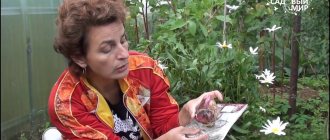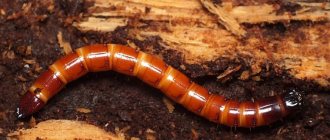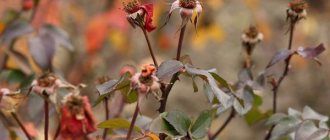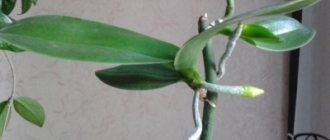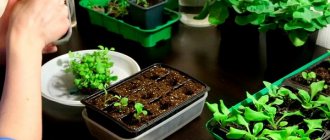The apple tree is considered one of the most frequent guests of Russian gardens. It does not require careful care and tolerates even the lowest temperatures with minimal care from the gardener. One of the main advantages of the apple tree is its fruitfulness. It is able to delight summer residents with fresh apples from the second half of summer until late autumn. In order for the harvests to be rich, and the fruits to be juicy and tasty, the plant should be helped. Growing and caring for an apple tree includes procedures such as fertilizing, pruning, pest control, and so on. We will tell you more about how to grow a healthy and strong apple tree in this article.
Apple tree care and cultivation
Irrigation and watering
Newly planted or transplanted apple trees, in addition to watering 3 buckets at planting, are watered three times. The apple trees are watered for the first time half a month after planting, the second time after a month, and the third time at the time of leaf fall. The volume depends on the weather. Often this is 4-6 buckets per tree.
When caring for a young apple tree, watering is carried out taking into account the occasional rainfall and soil composition.
Timing of watering:
- the first - a couple of days before flowering;
- the second - at the moment of the fall of the excess ovary of the apple trees;
- the third - at the moment of pouring apples;
- and the last one - in September or after the leaves fall on the apple trees.
The irrigation rate for soils with average mechanical composition is 50-60 liters per apple tree, poured out in one watering. For clay soils and chernozems, 15% less water is needed, and for sandy loams and drained peatlands, 20% more of the indicated volume.
If the climate is hot and the air is dry, then water it more often: about twice, or even three times a month.
Important! The prevailing opinion on the Internet and in paper publications about burns of apple tree leaves from sprinkling irrigation is a manifestation of amateurism and does not contain even 1% of the truth. On the contrary, if you don’t water the apple tree, it will be worse than if you water it in the heat. It’s just that the water sprinkled in the crown by sprinklers will evaporate by 45% without ever getting into the root layer.
Harvest time
To ensure that our ripe apples can be stored for a long time (and the fruits of autumn varieties can be stored until April), pick the fruits from the tree very carefully (work with cotton gloves so as not to damage the delicate skin).
There is no need to store stale or crushed fruits - they can be processed immediately.
- Remove the apples along with the stem - it promotes long-term storage. A natural waxy coating forms on the fruits - no need to wipe it off, it protects the apples from drying out and the influence of various microorganisms, which will help in caring for the apple tree.
Harvesting should be done in dry weather and preferably in the afternoon.
◊ Apples of summer varieties. They begin to be collected in August. These types of apples do not last long.
But you can collect the fruits 2-3 weeks before full ripening and store them at a temperature of 0-3° C.
In this case, the apples can last about 3-4 weeks.
◊ Apples of autumn varieties. The fruits are harvested in late August-early September. During this period, they are not yet fully ripe and slightly sour.
Until they are fully ripened, they must be kept in storage for 2-3 weeks. With proper storage, apples of autumn varieties will delight you with taste for 3-4 months.
◊ Winter apples. They are removed in October. Freshly picked from the tree, they have harsh flesh and a sour taste.
They need about 2-3 months to ripen. But these varieties are stored for a very long time - until April.
Fertilizers and fertilizers
Fertilizers allow the apple tree to accumulate a large vegetative mass, which in the future will allow it to grow many tasty fruits. To do this, in the first 2 years, fertilizing is done in early spring.
The first fertilizing is done with mullein infusion, and in May and June one foliar fertilizing is done with a complex fertilizer with microelements (“Zdraven-Turbo”, “Agrovita for fruit trees”, “Alliance for fruit trees”).
Watch the video about cow manure fertilizer:
To root-feed apple trees with nitrogen in the spring, you need to pour a bucket of compost or humus into the tree trunk circle and level it.
In the following years, before the apple trees begin to bear fruit, in addition to spring fertilizing with humus with simultaneous mulching of the trunk circle (12-18 kg per tree), in the fall they fertilize with phosphorus-potassium mineral salts, for digging or hoeing:
- For southern gardens - potassium sulfate 25-35g, double superphosphate 25-35g; ashes from a fire or wood ash 150 grams;
- For non-chernozem regions - double superphosphate 35-45g, potassium sulfate 35-50 grams, ash or ash 250 grams.
TIP: Do not overfeed trees with fertilizers, especially nitrogen. This has a bad effect on the overwintering of apple trees and the keeping quality of apples. It would be better to supplement the feeding of the subcortex “by leaf” with complex fertilizer (as indicated above) or the missing element.
It is also customary to feed apple trees that have just begun to bear fruit with urea, and in years with poor flowering this can be done later.
To do this, dissolve 35 grams of urea in 10 liters of water and treat the tree with a sprayer.
The first treatment is as soon as the flower petals of the apple trees fall off, the second is a month later, and the third is when the fruits are filling. The last time the dose can be increased to 55 grams if the weather is cool and the summer is damp.
Why are trellis hybrids needed, features of their formation
The shortest varieties of apple trees used for rootstock are called paradiski. Of all the categories, these are the most fragile and vulnerable trees. They are heat-loving and do not withstand wind well. That is why they need special support in the form of horizontally stretched strings.
Trellis apple trees are tied to horizontal supports, like grapes
Starting from the first year, each branch is guided and attached. As the growth grows, it is again tied to the spacer, preventing it from being pulled upward. As a result of many years of correction, a flat crown is obtained, evenly distributed laterally.
Trellis fence made of fruit trees
If several trees are planted in a row, a cordon is formed that resembles grape plantings . When choosing an apple tree variety for a garden plot, it is important to take into account the size that an adult tree will occupy. Provide it with optimal growth conditions and protection from adverse factors.
Mulching and sodding
Mulching apple trees grown using the “black fallow” or steam-green manure system:
- Significantly smoothes out temperature fluctuations during hot periods in the layer inhabited by suction roots;
- Promotes the accumulation of vermicompost ;
- And the reproduction and prosperity of beneficial soil biota;
- Allows less water to evaporate;
- Do not form a dense crust on the soil after watering or rain.
Apple trees are mulched with rotted manure, garden compost, mass after breeding earthworms, former mushroom blocks, seed husks, flax tows, and lowland peat.
IMPORTANT! The use of chaff, sawdust and shavings, straw and straw cuttings, high-moor peat, bark from stripping coniferous trunks or spruce branches is strictly prohibited!
Where apple trees grow, you can sow leaf mustard, oilseed radish, phacelia, and peas. After they grow 25 cm, the plants are mowed and left in the garden; this is also a good type of mulch.
Sodding is sowing in the rows of the garden such a mixture of grasses that will give a perennial green carpet, mow it twice a season, and the entire mowed mass is left in the area of tree trunk circles.
The most suitable composition for most of the Russian Federation is perennial ryegrass 25%, sheep fescue 22%, running fescue 28%, meadow bluegrass 25%.
But this mixture is for southern gardens: red fescue 40%, meadow bluegrass 35%, perennial ryegrass 25%. But such sowing of herbs is permissible in the 9th year following the planting of apple tree seedlings.
Processing and whitewashing of trunks
In all types of young apple orchards, not only the trunks are whitened, but also the branches that form the base of the tree.
The most suitable period for whitewashing will be from February 21 to March 31 . And the further south the garden is located, the earlier it is whitewashed. This will protect the young, rough bark of apple trees from “sunburn” and from frost damage caused by a sharp change in temperature.
For the whitewashing itself, you can use carbide, quicklime and fluff lime.
VERY IMPORTANT! Under no circumstances use bleach and compositions ready for work in damp areas!!! This is dangerous for apple trees!
Whitewash recipe: In 8 liters of water poured into a 10 liter plastic bucket, dissolve 2 kg of fluff, 1 kg of fatty clay, 1 glass of skim milk, 10 grams of wood glue or 30 grams of office glue, or one cake of fresh mullein.
Having prepared whitewash without glue, you will need to whitewash the entire garden after the first serious rain!
In the video, watch the expert’s opinion - why whitewashing of apple trees is necessary:
Late whitewashing of apple trees before the holidays in May will only decorate the garden, without really helping the apple trees. As well as whitewashing very old tree bark that is older than 20 years.
They whitewash with poplar , trying to coat everything thoroughly. If there are a large number of apple trees, whitewashing is mechanized.
If for some reason whitewashing is impossible, then tying the branches and trunks of apple trees with old agrofibre, matting, corn sheaves (corn shoots left in the field for the winter) or spruce branches will also help the apple trees “not get burned” in the sun.
Read more about whitewashing apple tree trunks here.
Removing moss, lichens, processing bark, sealing hollows
The trunks of old trees must be cleaned regularly in the fall. Scrapers and brushes are used for this. Wash the trunks with soapy water or a salt solution (1 glass per bucket of water). After cleaning, the bark must be whitened by adding clay and medications to the solution.
The hollows are cleared of dead wood and filled with cement mortar, polyurethane foam or clay-manure mash.
It is convenient to make a filling for a hollow from cement or clay
Treatment against diseases and pests
Chemical and biological protection against diseases and various harmful insects is one of the three important components in the question of how to care for a young apple tree.
Chemical protection of the garden should be carried out only as a destructive measure and in no case should it be used “for the sake of prevention.”
Because “chemistry” is equally dangerous for both harmful and beneficial insects, but the harmful ones, having become accustomed to the poison, multiply to incredible volumes, while the beneficial insects recover much more slowly.
Annual protection plan
Time until leaves bloom:
- Collecting and burning dry apples from branches;
- Treatment of bark with a solution of washing soda in case of an outbreak of bark beetles or treatment of twigs and branches with a solution of urea (25%) against fungal spores.
When young leaves appear:
- To prevent scab and rot, apple trees are treated with Bordeaux or HOM;
- When weevils fly, they are shaken off the branches onto bedding polyethylene in the evening or at dawn, followed by their extermination.
Flower appearance period:
- When affected by the flower beetle, more than half of the examined apple tree flowers are treated with Decis and Aktara according to the instructions;
- Diseases are treated either by using SCOR (according to instructions) or by using Bordeaux mixture when spraying apple trees;
- Ticks are destroyed with the drug “Antiklesch” or “Aktelik”;
- Gnawing and sucking are destroyed by the drugs “Dendrobacillin”, “Akarin (Agravertin)”, “Entobacterin” - these are safer drugs.
- But if the outbreak of harmful insects is large, then the insecticides Imidacloprid (200 mg-600 mg), Thiamethoxam (200 mg) are used; Chlorantraniliprole (100 mg). But carefully and only after the apple trees have bloomed! The solution is prepared strictly according to the instructions, using 2 liters per apple tree.
After flowering:
hunting belts on the trunks of apple trees . In the south they are inspected every 8 days, and in the northern regions once a month. If there is a cluster of pests, they are burned. 15 days after flowering.
Hunting belts.
In damp summers, treat apple trees with Fitosporin and Alirin-B, or Gamair and Glyokladin, but if the disease progresses, then use Quadris, Maxim and Discor.
A month after flowering.
If necessary, spray the garden against codling moth caterpillars, moths with Alpha-cypermethrin and Pirinex, but strictly according to the instructions!
18 days after the previous treatment.
If necessary, apple trees are sprayed a second time against codling moths, leaf rollers, itches, aphids and rots.
Repeat after 17 days, only when the third generation of the moth appears in the garden, and do not treat without its strong flight.
Early autumn time period before frost appears.
Treatment of the garden from wintering diseases and pests is whitewashing with copper sulfate, treatment with urea and removal of rotten carrion.
March, April
In spring, the snow begins to actively melt. For an apple tree, short-term stagnation of water in the tree trunk is not dangerous, but melt water can expose the roots.
Protection from melt water
If your site is located on a slope, then in the spring you need to provide drainage channels or compact the snow so that it acts as an obstacle to the flow of water and slows down its movement.
Damage Control
Sleet or freezing rain could break branches. Such shoots must be removed by cutting them to a whole part, and the cut areas should be treated with 3% Bordeaux mixture, and then also covered.
If the winter has been harsh, the apple tree may have damage - freezing shoots, sunburn, cracks in the bark.
- Frozen shoots need to be cut into a ring or onto a stump and then new shoots removed from it.
- Clean bark cracks and disinfect with 3% copper sulfate.
- Cover with a beeswax-based garden varnish (for example, Bee) and paint over with garden paint, just like sunburn.
Read more about how to cover up frost holes in this article.
Sanitary trimming and shaping
In March - early April (depending on the region), carry out sanitary pruning.
- Carefully inspect the trees and remove all dry, broken shoots and those that compete with each other.
- Do not cut many branches or shoots at once; if necessary, postpone the end of pruning until autumn or next spring.
- In the first days of March, you can also carry out formation. I advise you to use the traditional formation - leave 5-7 large branches, subordinate the central conductor (make it longer than other branches looking up, by 25-30 cm), remove tops (vertically growing shoots), thin out the crown.
Protection from pests and diseases
The most dangerous diseases for the apple tree are scab, powdery mildew, moniliosis, and the most dangerous pests are the codling moth.
- Collect hawthorn ; at an air temperature of 4 °C, spray the garden with Preparation 30 Plus or Prophylactic to destroy all wintering stages of pests.
- To prevent diseases , spray the plants with a strong fertilizer solution (8% urea or ammonium nitrate).
- of a bacterial burn that is fatal to the apple tree (it can be spread by bees), cut out the branches and spray the plant with Fitolavin.
- Against scab, plants can be treated with 3% Bordeaux mixture in the spring.
____________________________________________
APPLE TREE IN SPRING: SECRETS OF CORRECT CARE AFTER WINTER
Photo: treat with chemicals before buds open
Pruning branches of apple trees by season:
in spring
Young apple trees need shaping and pruning in the spring. Shoots that thicken the crown are cut off by 2/3, weak ones and those killed by frost are cut out completely, as are broken ones. Competitors, tops and growths are also cut out.
If they are more than 56 cm, then by half, if less, then by 1/3. In addition, intersecting branches and shoots with traces of disease are removed.
In spring, this is done either before the leaves unfold or before flowering begins.
Watch the video of the formation of apple tree seedlings:
in autumn
Apple trees are pruned at the end of leaf fall . And this type of pruning of young apple trees consists of slightly shortening the new shoots that have grown over the summer. The trees undergo severe pruning - clearing, cutting the branches by a third of their length if the trees have not been pruned at all before.
If annual growth is weak, ½ of the shoots are cut off. If the growth is weak (less than 30 cm), then you should not remove large branches, this will weaken the tree even more.
In the fall, remove all dry, too weak, broken shoots growing in the middle and shoots extending at an angle of 25 to 40 degrees from the trunk of the apple tree. Read more about autumn pruning of apple trees here.
IMPORTANT! A day with fogs and any type of precipitation is not suitable for pruning apple trees!
How to choose an apple tree seedling for planting
The choice of planting material must be approached very responsibly. Plant sellers at markets should not be trusted. Often the trees purchased there not only turn out to be of a completely different variety and are not suitable for a particular climatic zone, but are also affected by diseases.
Where to buy seedlings
A wide range of seedlings is presented in garden centers and nurseries that grow fruit crops.
Experienced consultants will help you choose zoned varieties and give recommendations on planting and caring for trees.
When selecting apple trees, it is important to take into account not only the taste of their fruits, but also the timing of ripening. By forming your apple orchard from summer, autumn and winter varieties, you can not only harvest the entire season, but also preserve it until spring. It is also necessary to select pollinators for self-sterile varieties.
Varietal healthy seedlings must be purchased from nurseries
What varieties of apple trees to choose
First of all, you need to decide what type of plants is suitable for your site. A very important factor influencing the longevity and productivity of the future apple orchard is the location of groundwater. If they lie at a depth of at least 3 m, you can plant vigorous apple trees with powerful deep roots and a height of more than 8 m.
If the groundwater in the area is high, you should choose low-growing varieties of apple trees
Semi-dwarf trees up to 5 m will grow well on fertile soil, where groundwater is at least 2.5 m. Dwarf apple trees, whose height does not exceed 2.5 m, have a more superficial root system and are quite suitable for small garden plots with groundwater flowing at a depth of 1.5 m. Miniature trees can also be used to create a container garden.
If the water layers are too deep, the roots will not be able to extract moisture from the soil and ensure the life of the tree. If groundwater is close to the surface, constant waterlogging will cause root rot and the plants will die.
What else to pay attention to
One- and two-year-old apple trees take root better: one-year-olds with only a stem, without branches, and two-year-olds with two or three branches. To select healthy and viable plants, you need to take a good look at them.
One-year-old seedlings with a developed root system are more likely to take root well than two-year-olds
The stem should be smooth, without damage, and have living buds. If there is a compaction 7 cm from the root collar, this is the grafting site, which means the seedling is a varietal one. The branches should be flexible, without spots, with light green flesh under the bark, if you pick it up a little. The root system is developed, moist and elastic: a strong tap root - 40 cm long with many root lobes. If it is cut off, growth is likely to be stunted and the tree will grow weak and sickly.
Without soil, the root system of an apple tree can last no more than 2 weeks; if stored for a long time, it dries out, and the tree is unlikely to take root.
The container plant should be removed from the packaging: the earthen ball should remain intact and completely braided with roots. If the soil crumbles, the plant has recently been potted. It is not worth taking such a seedling.
Before purchasing, seedlings with a closed root system should be removed from the packaging and examined.
Digging and tillage
Digging or hoeing in the garden is done only when the soil is completely ready (“ripe”). This is prohibited when the earth “smears” the shovel (when digging, the earth does not loosen, but sticks to the tool). The parched soil is dusty.
, humus is scattered under the trees as early as possible
When digging up soil in the garden in the autumn, the depth of cultivation should be as small as possible so as not to damage the roots of apple trees.
In the near-trunk areas, the soil is cultivated to a depth of 6-8 cm near the trunk and 11-14 cm at the end of the near-trunk zone; between rows it can be loosened to a depth of a quarter meter.
A shovel, preferably an “American” one, stands with its edge to the trunk when digging, and loosening proceeds in a circle, like a snail, with increasing digging depth, so as not to damage the main roots.
Digging the soil around the apple tree.
ADVICE: During the winter, it is better not to crush the soil when digging in the garden , but to keep it lumpy, with a hilly surface; this will supply the soil with moisture, and the overwintering stages of pests will die over the winter. But in areas with high wind erosion, they dig up once every 5 years and only in the spring! The rest of the time they dig with forged pitchforks, and in strong winds they dig with them, only loosening the soil layer without turning it over.
Caring for young apple trees by season:
in spring
Caring for young apple trees in spring is:
- Pruning after winter;
- Feeding and mulching of tree trunk circles;
- Protection of apple trees from frost;
- Protection from diseases and harmful insects.
These are all activities for spring garden care.
In summer
Caring for young apple trees in the summer mainly means fighting emerging diseases and caterpillars on apple trees, mites and aphids.
When it’s hot, the garden is watered, and when there are obvious nutritional shortages, the trees are fed. They pull out weeds in the aisles and near-trunk circles of young apple trees. It would be good to loosen the soil after surface watering or rains, otherwise the apple trees will have difficulty with the soil crust.
in autumn
Caring for young apple trees in the fall consists of special whitewashing of the upper part of the tree, while the bottom is wrapped with felt, spruce branches or geotextiles to prevent the gnawing of hares and mice.
When wondering how to care for a young apple tree in the first year of planting, know that it is quite simple. The apple tree does not need feeding in the fall; it has enough organic matter in the mulch and minerals in the planting hole.
Apple trees over 4 years old are fed as follows: 25 grams of potassium and 35 grams of phosphorus per tree.
Preparing a planting hole on different natural soils
The process of feeding a young tree
Areas with fertile soil are extremely rare. Therefore, it is necessary to optimize the soil that the owner received. Based on the structure and composition of the existing soil, the set of improving additives differs.
Improving sandy, poor soil
To plant an apple tree, the soil composition must be adjusted to light loam.
To increase fertility, mineral and organic fertilizers are applied.
The following standards are recommended:
The apple tree grows safely with a neutral reaction at a pH of 6.5 – 7.
If the indicators are lower, then you need to add one of the calcium-containing substances:
- Slaked lime
- Chalk
- Dolomite flour
- Limestone powder
- Wood ash
All additional components are evenly mixed with natural soil and filled into the planting hole.
Adding additives to clay soil
Clay soil
1To transform heavy soils, you will need coarse sand or bottom peat to loosen the excessive density.
2On average, add 4 – 6 kg/m2 of peat or 25 – 40 kg/m2 of coarse river sand.
3The nutritional composition is improved with the help of organic fertilizers, for example, manure - 3 - 5 kg/m2.
4If necessary, adjust the acid-base balance.
Tips for pest control
Here is a list of important tips and reminders for apple tree growers:
- Before using each drug for the first time, you must try it on one of the branches of the apple tree. If after 48 hours the condition of the leaves has not deteriorated, then it can be consumed.
- For greater effectiveness of “chemistry” in the war for the harvest, you need to alternate the active ingredients in the preparations in the garden.
- Always read the manual and study the label and information about the drug online before using it.
- Spray the garden taking all safety precautions.
- Infusion and decoction of tobacco is toxic to humans!
- Treatment during flowering is dangerous for apple trees !
Caring for young apple trees brings excellent results.





